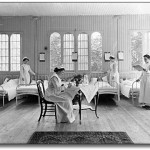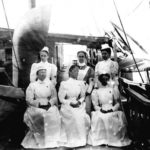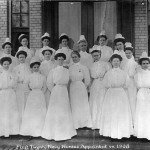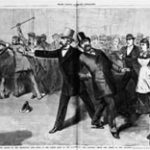Like blacks (see last post), women found it hard to enter the medical profession; in the U.S., women were kept out of hospitals almost entirely until the strain of caring for the wounded during the Civil War showed how valuable they were. Though a sprinkling of female doctors gained attention during the mid to late 1800s, most females in medicine were nurses. However, most did not consider work in mental institutions, where patients could be violent and destructive. Asylum nurses were usually men during much of the 1800s, though married couples sometimes worked together in wards. When female nurses did begin to work at large institutions, they did as much grunt work as compassionate care. Nurses were often expected to sweep and mop their wards, and perform many other housekeeping tasks. It is little wonder that they wanted and accepted help from patients. They had little time off, and were expected to follow doctor’s orders without argument.
By the turn of the century, alienists began to rethink their position on the use of female nurses in asylums. An article by Dr. Charles R. Bancroft (medical superintendent at New Hampshire State Hospital) in the October, 1906 issue of the American Journal of Insanity discussed how to use female nurses effectively. The author believed that it would be best to follow the example of regular hospitals, which gave head nurses both responsibility and authority. “There must of necessity be men attendants, but their position should be that of the general hospital orderly whose duty it will be to execute the orders of the head nurse,” said Bancroft. The doctor displayed both chauvinism and insight when he stated: “Woman are naturally better housekeepers than men,” and later, “. . . they are better nurses than men, but their qualifications never show for what they are worth unless the women are in the superior position.”

Infirmary Nurses in a Toronto Insane Asylum, circa 1910, courtesy Queen Street Mental Health Centre, Archives of Ontario
______________________________________________________________________________________






